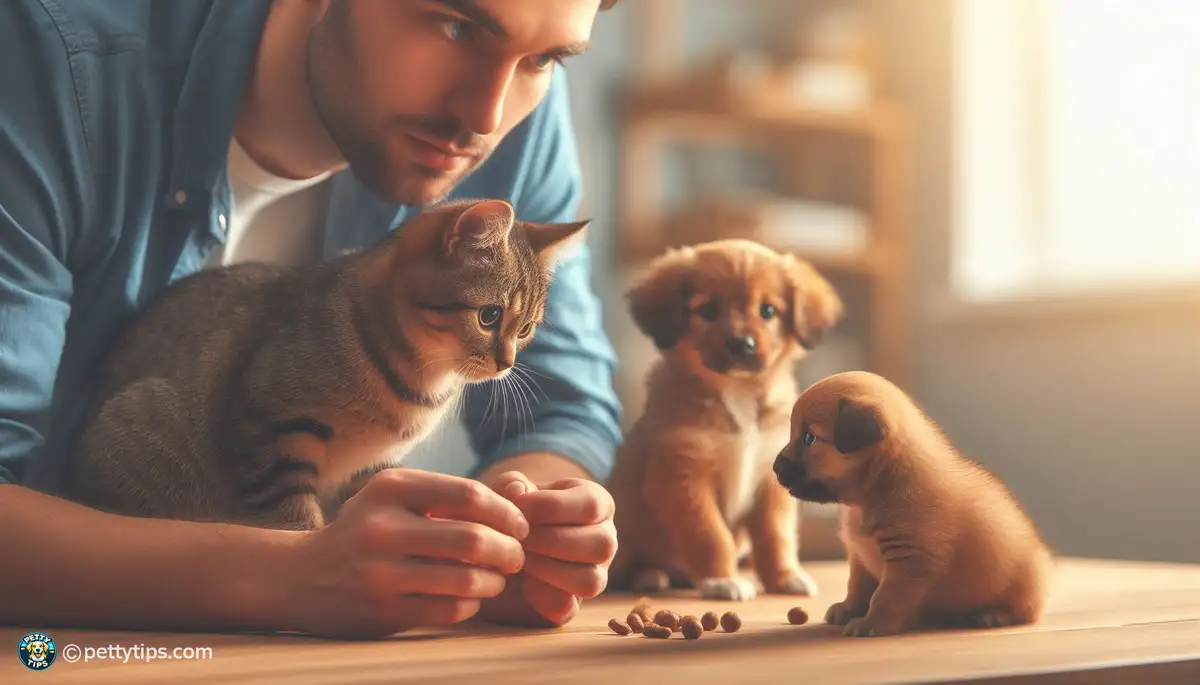
The Psychological Importance of Scratching for Cats
Edward Giddens - Oct 13, 2024 - 7 min read


Anxiety in cats can manifest in various ways, from excessive grooming to hiding. It's crucial to observe your cat's behavior closely to identify signs of stress or discomfort. Cats may also exhibit aggression or vocalization when feeling anxious, especially in unfamiliar situations or around new animals. Understanding these signs is the first step in addressing your cat's anxiety and ensuring a smooth introduction to new pets.
Every cat is unique, and what triggers anxiety in one may not affect another. Common triggers include changes in the environment, loud noises, or the presence of unfamiliar animals. By pinpointing the specific triggers that cause your cat distress, you can better prepare for introducing a new pet and minimize potential conflicts or stressors.
Providing a safe space for your anxious cat is essential during the introduction process. This could be a quiet room equipped with familiar bedding, toys, and hiding spots where your cat can retreat if feeling overwhelmed. By offering a sanctuary where your cat feels secure, you can help alleviate anxiety and facilitate a gradual adjustment to the new pet.
Introducing a new pet to an anxious cat should be a gradual process to minimize stress and prevent conflicts. Start by allowing the animals to become familiar with each other's scent by exchanging bedding or using pheromone diffusers. This gradual introduction helps reduce the likelihood of aggression or fear-based reactions when the pets finally meet face-to-face.
Using positive reinforcement techniques can encourage desirable behaviors and create a positive association between the new pet and your anxious cat. Rewarding calm and relaxed behavior with treats or praise reinforces positive interactions and helps build trust between the animals. Additionally, providing separate feeding stations and ensuring each pet has access to resources like food, water, and litter boxes can prevent competition and reduce tension during the introduction phase.
If you're unsure how to proceed or if your cat's anxiety is severe, seeking guidance from a professional behaviorist or veterinarian is advisable. These experts can assess your cat's behavior, provide personalized recommendations, and offer strategies to help ease the introduction process. With their guidance, you can address your cat's anxiety effectively and ensure a successful integration of the new pet into your household.
When it's time for the pets to meet, keep the initial interactions controlled and supervised. Start by allowing them to see each other through a baby gate or carrier, maintaining a safe distance while observing their reactions. Look for signs of aggression or fear, and be prepared to intervene if necessary. Gradually decrease the distance between the animals as they become more comfortable with each other's presence.
Introducing a new pet to an anxious cat requires patience and persistence. It's normal for there to be some initial tension or reluctance, but with time and consistent effort, most cats can learn to coexist peacefully with other animals. Be prepared for setbacks along the way and be patient with both your anxious cat and the new pet as they adjust to each other's presence.
Throughout the introduction process, continue to monitor the interactions between your cat and the new pet closely. Look for signs of improvement, such as relaxed body language, curiosity, or playful behavior. Conversely, be vigilant for any signs of stress or aggression and be prepared to adjust your approach accordingly. By staying attentive and responsive to your pets' needs, you can facilitate a smooth transition and foster a harmonious relationship between them.
Maintaining a consistent routine can help reduce anxiety in cats and promote a sense of security in the household. Stick to regular feeding times, play sessions, and grooming rituals to provide stability for your pets. Establishing a structured environment can also help prevent conflicts and minimize stressors that may trigger anxiety in your cat.
Enriching your cat's environment with toys, scratching posts, and interactive play sessions can help alleviate boredom and reduce anxiety. Engaging your pets in mentally stimulating activities not only provides them with physical exercise but also helps redirect their focus away from potential sources of stress or conflict. By keeping your pets entertained and engaged, you can create a positive atmosphere and encourage bonding between them.
Building positive relationships between your pets takes time and effort, but the rewards are well worth it. Encourage gentle interactions between them and supervise their play sessions to ensure they remain safe and respectful of each other's boundaries. Offer praise and rewards for friendly behavior, and intervene promptly if any conflicts arise. With patience, consistency, and positive reinforcement, you can help your anxious cat and new pet develop a strong and harmonious relationship.
In conclusion, introducing a new pet to an anxious cat requires careful planning, patience, and understanding of your cat's behavior. By recognizing signs of anxiety, preparing for the introduction, and fostering positive relationships between your pets, you can create a harmonious household where all animals feel safe and secure. Remember to seek professional guidance if needed and to prioritize your pets' well-being throughout the process. With time and dedication, your anxious cat can learn to accept and even embrace the presence of a new furry friend in their life.